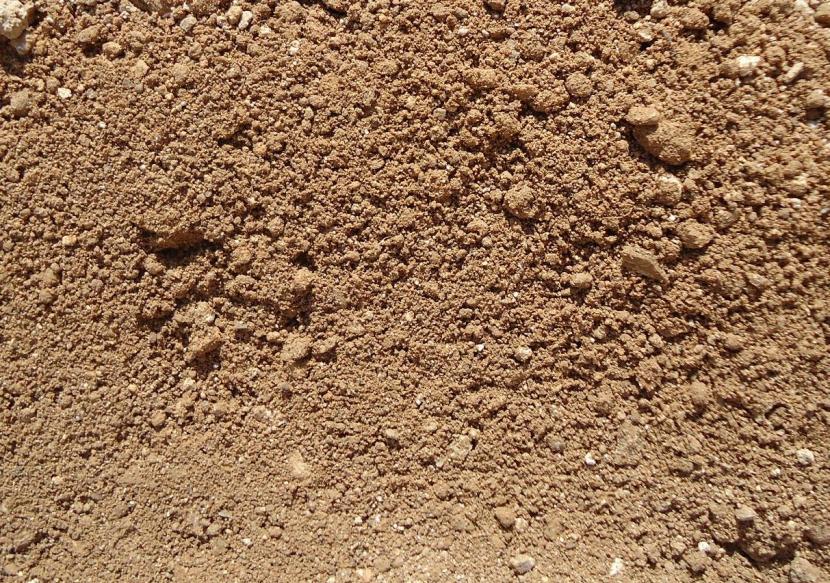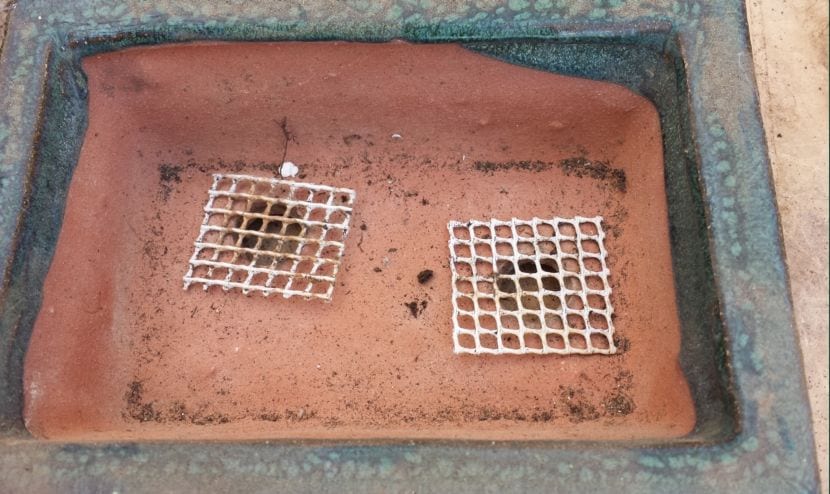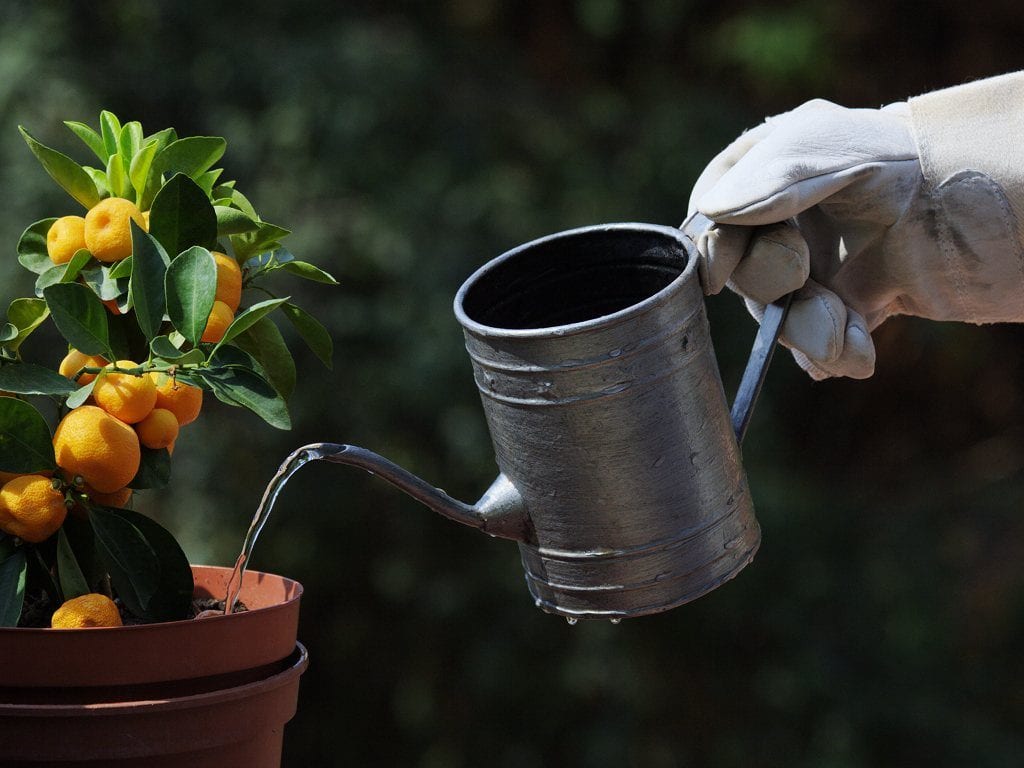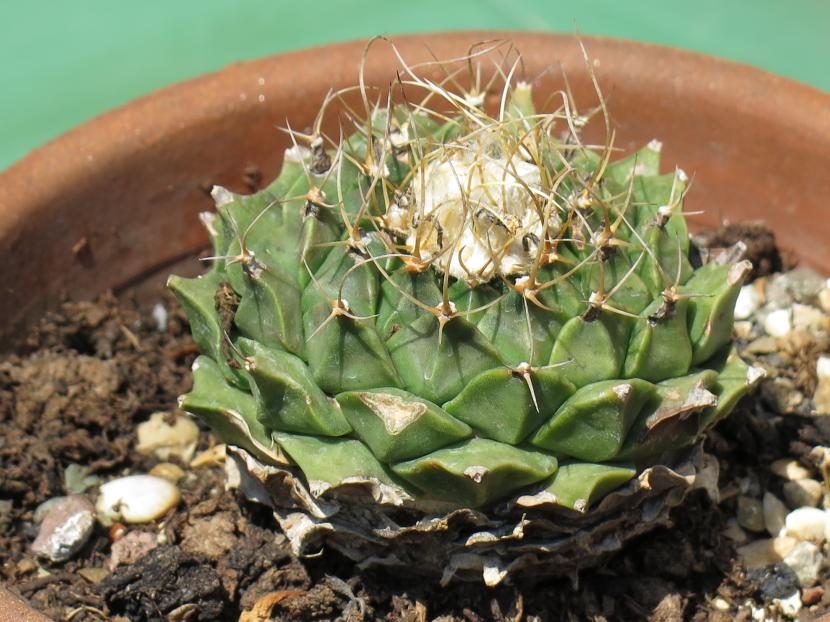
Perlite, an ideal material to improve drainage.
If watering is one of the most complicated tasks that every gardener and / or garden enthusiast has to, more or less, control so that their plants grow well, the task is further complicated when the substrate or soil does not drain fast enough so that the roots develop properly.
There are some, such as succulents, that although they need to be watered as often as a seasonal plant (2 to 3 times a week), if the growing medium does not have good drainage, it is most likely that they will rot in little. weather. How to avoid problems?
Soil drainage

Before deciding which plants we want to put in a garden, it is very important to check how the soil drains. To do this, you must dig a hole of about 50x50cm, and fill it with water. If after 3-4 days there is still water in the bottom, then it will be necessary to improve it, why? By the mushrooms.
These microorganisms love humid environments, so they will not hesitate for a moment to infect those plants that are weak or sick at any time. And to this we must add that they are very difficult to eradicate, with prevention being more advisable than cure.
How can it be improved?
It can be done in two ways: by mixing the soil from the planting hole with perlite, expanded clay balls or any other similar material in equal parts, or by making general changes to the garden soil.
Method 1 - Install Drain Pipes
This method is especially suitable for soils that really have a hard time draining the water. They are installed as follows:
- Trace the lines where the pipes will be laid on the ground. Each lateral trench must be joined to the main one at an angle of 60º, and there must be a distance of about 2 meters between them.
- Make trenches about 50cm deep by 40cm wide, on a slight slope.
- Put a layer of about 10cm of gravel.
- Place the tubes.
- Cover with gravel, and put on top of this geotextile fabric. This will prevent dirt from entering and damaging the tubes, but will allow water to pass through.
- Cover with sand.
Method 2 - Take advantage of slopes (or create them)
If the garden has slopes, take advantage of them! And if you don't have, you can create them accumulating more soil in one place than another. Rain and irrigation water can be controlled by raking the ground 😉.
Method 3 - Plant the plants above ground level
And no, it doesn't look bad. Is about create dirt mounds and plant over them, so that when it is watered, the water will run down the slope and will not accumulate as much around the plant, thus preventing its rotting.
Other options - Choose plants that grow in poorly drained soils
If you don't want to complicate too much, you can choose plants that grow in poorly drained soils. Here you have a list of plants that live in a Mediterranean climate, where the soil is limestone and, therefore, where the water does not drain well.
How to make the drainage in the pots

Drain grate
Improving the drainage of our pots is much easier and just as important. I often recommend using a universal growing medium mixed with perlite, clay balls or similar because this substrate alone can create problems for plants, especially succulents (cacti and succulents), and seedlings.
How can it be improved?
There are two methods:
Method 1 - Mix the growing medium with porous materials
In nurseries it is becoming easier to find substrates that are already prepared for certain plants. But… (there is always a but), the drainage still, from my point of view, is an issue that has yet to be improved. Fortunately, can be made by mixing it with perlite, clay balls, vermiculite or even with coconut fiber.
The proportion will vary depending on the type of plant it is. For instance:
- Trees and shrubs: peat-based substrate mixed with 20-30% perlite or similar.
- Palms: peat-based substrate mixed with 30% perlite or similar.
- Flowering plants (annuals, biannuals and perennials): universal culture substrate mixed with 20% perlite.
- Succulents (cacti and succulents): peat or mulch-based substrate with porous material mixed in equal parts, or even add more porous material.
Method 2 - Place Drain Grates
In order for the water to drain as quickly as possible, they can be placed drain grates (of which are used for bonsai), or even - and it will be cheaper - they can be put pieces of plastic mesh very small holes, or coffee filters.
Irrigation: what you need to know

Controlling irrigation is essential to prevent plant roots from suffocating. Not all plants need the same amount of water or be watered with the same frequency. Therefore, before watering it is important to check the humidity of the substrate or soil. How? A) Yes:
- You can insert a thin wooden stick - like those used in Japanese restaurants - all the way to the bottom. If when you remove it, it comes out practically clean, it is because the soil in that area is dry. Tuck it back in elsewhere around the plant to confirm, and water only if it's really dry.
- Use a digital moisture meter. You will find it for sale in nurseries and garden stores. It can be quite practical, since you just have to enter it and it will tell you the degree of humidity in that area. But, to be really useful, you must introduce it elsewhere around the plant to make sure.
- If it is in a pot, you can weigh it as soon as you water it, and again after a few days. This way you will know when to water by the weight you have at all times.
Another important point is avoid putting the plate under the pots, since the water that remains puddled can suffocate its roots. If you have no choice, be sure to remove the excess water after allowing 10-15 minutes of watering. In this way, your plants can continue to grow normally.

I hope these tips help you to have beautiful plants and a garden (or patio) 🙂.
Good morning,
I would like to install some drainage pipes in my garden but I don't know where to buy them. Could you tell me a place to buy them?
I'm from barcelona.
Hello Eva.
You can buy them online, as in this store.
A greeting.